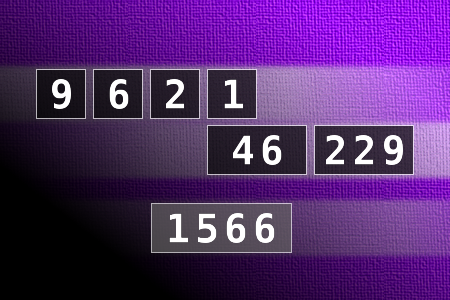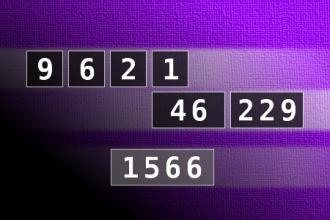Calculate the number 1566
NUMBERMANIA: Calculate the number 1566 using numbers [9, 6, 2, 1, 46, 229] and basic arithmetic operations (+, -, *, /). Each of the numbers can be used only once.Correct answers: 13
The first user who solved this task is Nasrin 24 T.
#brainteasers #math #numbermania

The ten commandments of marriage
Commandment 1. Marriages are made in heaven. But so again are thunder and lightning.
Commandment 2. If you want your wife to listen and pay strict attention to every word you say, talk in your sleep.
Commandment 3. Marriage is grand — and divorce is at least 100 grand!
Commandment 4. Married life is very frustrating. In the first year of marriage, the man speaks and the woman listens. In the second year, the woman speaks and the man listens. In the third year, they both speak and the neighbors listen.
Commandment 5. When a man opens the door of his car for his wife, you can be sure of one thing: Either the car is new or the wife is.
Commandment 6. Marriage is when a man and woman become as one; The trouble starts when they try to decide which one.
Commandment 7. Before marriage, a man will lie awake all night thinking about something you say. After marriage, he will fall asleep before you finish.
Commandment 8. Every man wants a wife who is beautiful, understanding, economical, and a good cook. But the law allows only one wife.
Commandment 9. Marriage and love are purely matter of chemistry. That is why wife treats husband like toxic waste.
Commandment 10. A man is incomplete until he is married. After that, he is finished.
Commandment 2. If you want your wife to listen and pay strict attention to every word you say, talk in your sleep.
Commandment 3. Marriage is grand — and divorce is at least 100 grand!
Commandment 4. Married life is very frustrating. In the first year of marriage, the man speaks and the woman listens. In the second year, the woman speaks and the man listens. In the third year, they both speak and the neighbors listen.
Commandment 5. When a man opens the door of his car for his wife, you can be sure of one thing: Either the car is new or the wife is.
Commandment 6. Marriage is when a man and woman become as one; The trouble starts when they try to decide which one.
Commandment 7. Before marriage, a man will lie awake all night thinking about something you say. After marriage, he will fall asleep before you finish.
Commandment 8. Every man wants a wife who is beautiful, understanding, economical, and a good cook. But the law allows only one wife.
Commandment 9. Marriage and love are purely matter of chemistry. That is why wife treats husband like toxic waste.
Commandment 10. A man is incomplete until he is married. After that, he is finished.

